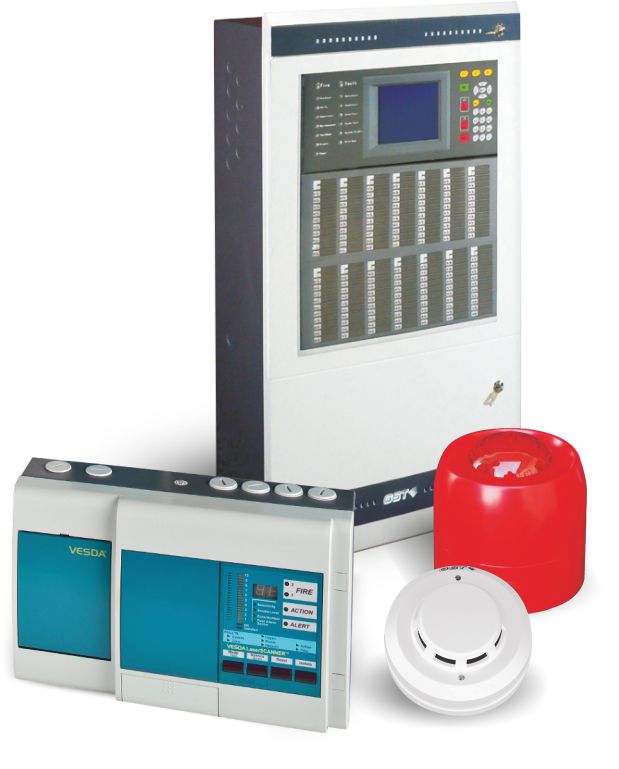
Pre-Fire Detection Systems
Here’s an overview of the different types of pre-fire detection systems, their applications, and how they contribute to safety:
1. Conventional Fire Alarm Systems:
- Application: Common in smaller or simpler buildings such as residential homes, small offices, and low-risk environments like retail shops.
- Function: Detect smoke, heat, or fire in designated zones and trigger alarms when activated.
- Benefits: Cost-effective and easy to install, suitable for small buildings with minimal complexity.
2. Intelligent Fire Alarm Systems:
- Application: Ideal for larger, more complex buildings like corporate offices, hospitals, schools, and multi-story buildings.
- Function: Use advanced sensors to evaluate environmental conditions, automatically adjusting sensitivity to reduce false alarms and pinpoint the exact location of a fire.
- Benefits: Provides more accurate data, reduces false alarms, offers faster response times, and is scalable for large facilities with varying levels of risk.
3. Explosive Fire Alarm Systems:
- Application: Used in high-risk environments like chemical factories, oil refineries, gas stations, and laboratories that deal with combustible or explosive materials.
- Function: Monitors for hazardous gases (e.g., methane, propane) and potential ignition sources to prevent explosions and fires.
- Benefits: Essential for safety in volatile environments, detecting both fire and explosion risks to allow for timely interventions.
4. Aspirating Smoke Detection Systems (ASD):
Overall Benefits and Integration:
Each of these systems can be integrated with other safety measures, such as fire alarms, sprinklers, and emergency communication systems, ensuring a coordinated, quick response during a fire. The application of these systems depends on the level of risk, the complexity of the building, and the environment’s specific needs, making it essential to choose the right system for effective fire prevention and early detection.
Your Queries, Our Priority – Contact Now!
From initial consultation to full-scale solutions, we’re committed to understanding your needs and delivering prompt, expert support


